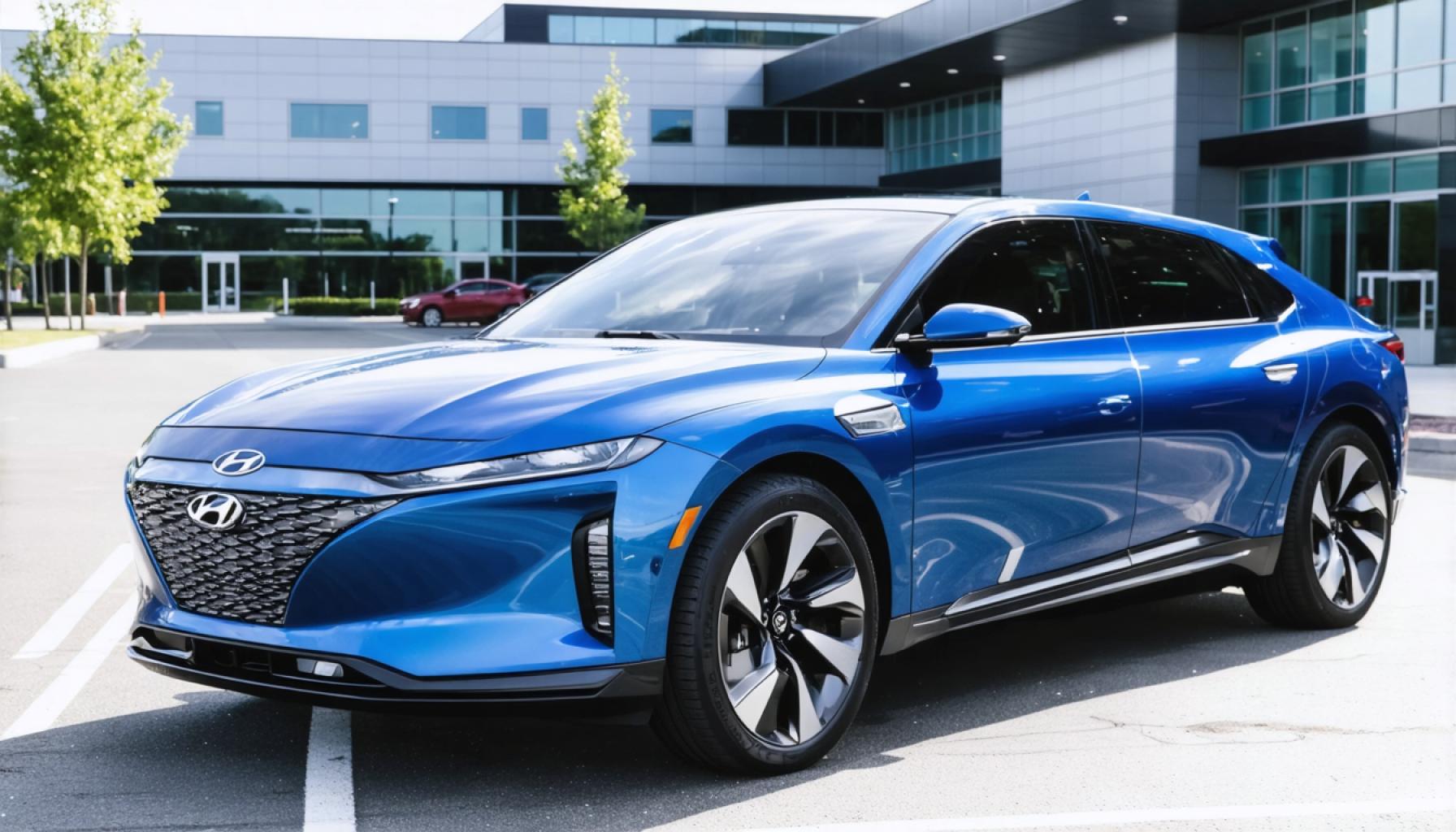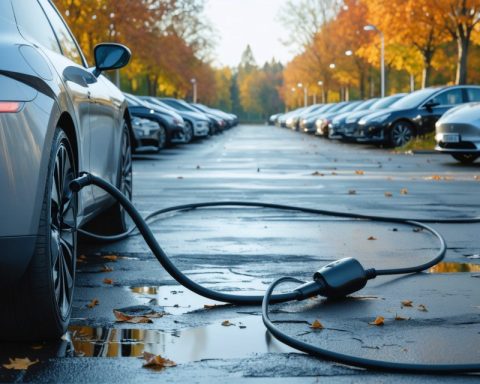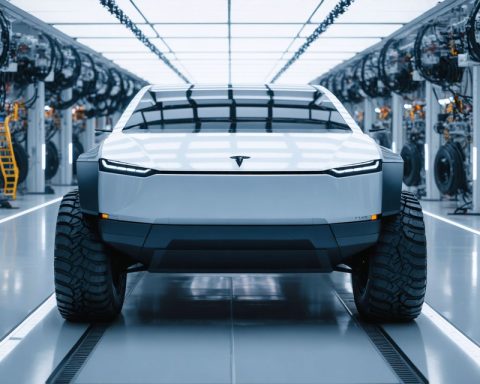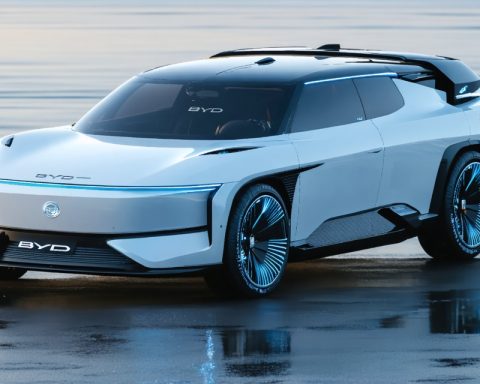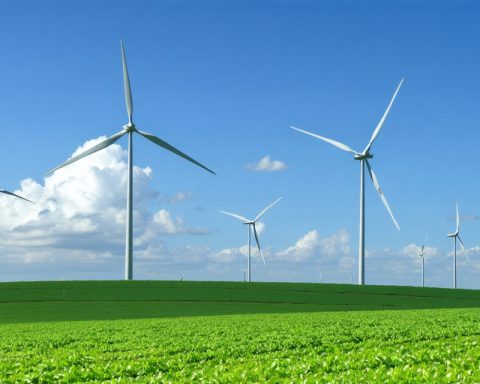- Hyundai inaugurated a $7.6 billion electric vehicle plant in Ellabell, Georgia, marking a milestone for American automotive innovation.
- The plant, spanning 3,000 acres, aims to produce 500,000 vehicles annually, focusing on both electric and hybrid models.
- Hyundai’s investment aligns with recent U.S. tariff protections, benefiting from policies to support American-made vehicles.
- The facility is expected to boost local economies and create thousands of jobs, expanding beyond the current 8,500 employees.
- Hyundai’s initiative underscores a commitment to sustainable practices and strengthens U.S.-South Korea enterprise partnerships.
- Georgia emerges as a key player in the electric vehicle sector, emphasizing clean energy advancements and new automotive standards.
Against the lush backdrop of Georgia’s countryside, a celebrated moment unfolded for the future of American automotive innovation. Hyundai marked a milestone with the grand opening of its colossal electric vehicle manufacturing plant, nestled in the quaint town of Ellabell. This isn’t just a factory—it’s the heartbeat of Hyundai’s $7.6 billion vision, sprawling across 3,000 acres where the hum of machinery meets human ambition.
The air buzzed with excitement as Hyundai’s Executive Chairman, Euisun Chung, addressed a sea of vivid blue shirts—proud employees gathered to hear the company’s ambitious plans. With resolute commitment, Chung declared an audacious leap in production capacity, setting the stage to transform this plant into a powerhouse capable of producing 500,000 vehicles annually. This bold move signifies Hyundai’s enduring dedication to establishing roots and flourishing alongside American workers and innovation.
As gleaming Ioniq models rolled off the line, part of Hyundai’s pioneering range of electric vehicles, the plant’s synergy of human and robotic efforts was palpable. The rhythmic dance of steel being transformed into sleek, modern vehicles set to change the roads they’ll grace. The immediate expansion aims to produce both electric and hybrid vehicles, with hybrids poised to account for a significant chunk of production.
Hyundai’s drive extends beyond vehicular independence, taking advantage of newly announced plans to shield American-made vehicles from burdensome tariffs. With protection from import taxes recently enacted by President Donald Trump, Hyundai stands to benefit, reinforcing its growing influence in the U.S. market. Trump, acknowledging Hyundai’s hefty $21 billion commitment in American infrastructure, praised and encouraged this strategic alignment of South Korean enterprise and American labor.
The manufacturing juggernaut’s presence in Georgia is much more than a commercial venture. It signals the dawn of a transformative era for the state—delivering thousands of jobs and invigorating local economies. With planned expansions, the workforce could potentially swell well beyond the existing 8,500 employees. Investing in newer technologies and infrastructure echoes the larger narrative of clean energy advancements and decreases dependency on traditional automotive staples.
Beneath the Georgia sun, Hyundai seems poised to steer the course of electric mobility in America, doubling down on sustainable practices and robust manufacturing. This is not simply a promise of vehicles—it’s a vehicle of promise. The expansion signals that electric vehicles are more than a trend; they’re the foundation of an industry committed to sustainable innovation and thriving partnerships. As Hyundai forges ahead, Georgia stands as a testament to what can be accomplished when bold visions align with real-world ingenuity.
Hyundai’s Bold Leap in Georgia: Setting the Pace for Electric Vehicle Innovation
Introduction
Hyundai’s recent unveiling of its state-of-the-art electric vehicle manufacturing plant in Ellabell, Georgia, represents a turning point in the American automotive landscape. With a $7.6 billion investment and a sprawling 3,000-acre facility, the plant is set to be a beacon for Hyundai’s commitment to sustainable innovation, job creation, and American manufacturing prowess. This transformative venture in Georgia isn’t just about producing cars; it’s a testament to ambitious new beginnings in automotive technology.
Key Facts and Insights
Hyundai’s Investment and Economic Impact
1. Job Creation and Economic Growth: The plant is expected to create thousands of jobs, significantly impacting local economies. Hyundai aims to expand the workforce beyond the initial 8,500 employees, fostering economic vitality in Georgia.
2. Collaboration with American Workers: Hyundai’s collaboration with American workers highlights a model of international partnership that leverages US labor strengths, enhancing skill sets and boosting economic prospects.
Technological and Environmental Commitment
3. Electric Vehicle Production: Targeting an annual production capacity of 500,000 vehicles, Hyundai’s facility will primarily focus on electric and hybrid models. This diversification underscores the brand’s commitment to reducing carbon emissions and championing sustainable transportation.
4. Innovation in Manufacturing: The integration of cutting-edge robotics in the production process signifies Hyundai’s technological leadership. This synergy between human expertise and robotic precision paves the way for efficient, high-quality vehicle production.
Strategic and Policy Advantages
5. Tariff Protection and Policy Alignment: Hyundai benefits from recent US tariff protections on American-made vehicles. This policy alignment, influenced by the previous administration, supports Hyundai’s strategic market positioning and reinforces its commitment to the US market.
6. Investment in Clean Energy: Hyundai’s initiative is aligned with broader industry trends toward clean energy, promoting advancements in electric vehicle technology and infrastructure. This investment is crucial in decreasing reliance on fossil fuels and fostering eco-friendly vehicles.
Addressing Common Questions
How does Hyundai’s investment compare to other automakers in the US?
Hyundai’s $7.6 billion investment is one of the largest single commitments in the US auto industry. It rivals initiatives by industry titans like Tesla and Ford, positioning Hyundai as a formidable player in the burgeoning electric vehicle market.
What are the expected environmental benefits of the new plant?
Hyundai’s focus on electric and hybrid vehicles will significantly reduce greenhouse gas emissions compared to traditional internal combustion engines. The plant’s operations are informed by cutting-edge sustainable practices, echoing global environmental goals.
Will Hyundai’s presence impact local housing and infrastructure in Georgia?
Yes, the influx of job opportunities and the economic boost are likely to spur growth in housing, education, and transportation infrastructure in Ellabell and surrounding areas, further catalyzing regional development.
Recommendations and Quick Tips
– For Investors: Monitor Hyundai’s market presence as it expands in the US, especially its advancements in EV technology and manufacturing efficiency.
– For Job Seekers: Explore potential opportunities at Hyundai’s Georgia plant—a promising avenue for employment in advanced manufacturing.
– For Environmental Advocates: Support policies that favor investments in electric vehicle infrastructure, which align with sustainable transportation goals.
Conclusion
Hyundai’s audacious investment in Georgia is a landmark in the American automotive story, emblematic of innovation and economic dynamism. Its efforts underscore the frictionless melding of South Korean enterprise with American labor and ingenuity.
For more information on Hyundai’s global initiatives, visit the Hyundai main website.
By harmonizing visionary ambition with practical execution, Hyundai is poised to lead the charge in the electric vehicle sector, setting new benchmarks for environmental responsibility and technological advancement.
